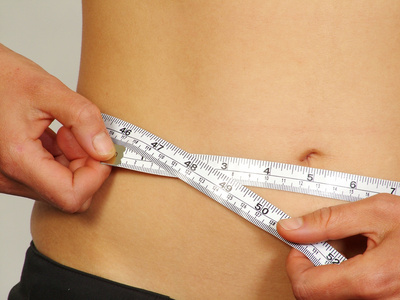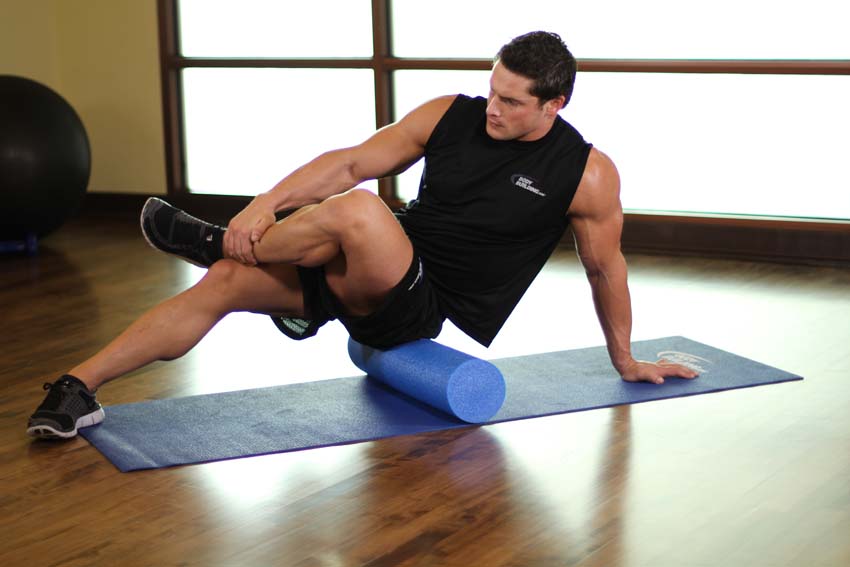 Building muscle is a term that can be easily misconstrued because automatically the vision of a hulk-size man with bulging muscles and popping veins comes up. In reality, building muscle means increasing the amount of lean tissue–which is associated with longevity and being fit. Read these workout tips to help you build muscle and preserve your fat-burning capacity!
Building muscle is a term that can be easily misconstrued because automatically the vision of a hulk-size man with bulging muscles and popping veins comes up. In reality, building muscle means increasing the amount of lean tissue–which is associated with longevity and being fit. Read these workout tips to help you build muscle and preserve your fat-burning capacity!
Know Where YOU Need To Start: Prioritize Your Goals
I will be writing a series of articles on Workout Tips. The reason for this is workout tips vary based on your goals. Here are the articles I will be writing:
- Workout Tips to Lose Weight
- Workout Tips to Improve Cardio
- Workout Tips to Build your Core.
It is important to know where you need to start. If you need/want to work on all of the above, that’s okay, but to be successful and feel accomplished I recommend that you section out your goals in order of priority.
Grab a pen and write down your workout priorities. If one of those priorities is to build muscle, then this article will help.
Tip #1: Follow the Correct Training Program
There are various fitness routines available in forms of classes in the community, different apps, and following what your friends are doing. Once you know you want to build muscle, then do the things that will help you build muscl. Choosing to do spinning classes 3 days a week is not going to help with that particular goal—it would be more applicable to Workout Tips to Lose Weight.
A program to build muscle must involve Resistance Training. Resistance training can include:

- Body weight exercise (i.e. Pushups, Lunges)
- Free Weights/Kettlebells
- Resistance Bands
- Exercise Machines
I always incorporate at least 2 of these forms of training not only with my clients but also for myself. Rarely (or never) do I advise people to just stick to Machines.
The general formula for building muscle includes:
- Resistance training
- About 5-6 exercises per training session
- 3 sets per exercise
- About 8-10 (until fatigue) repetitions per exercise
- Rest for about 1.5-2 minutes before doing another set
Check out MuscleandFitness.com to choose a workout program based on your gender and goals
Tip #2: You Can’t Change What You Don’t Measure

I strongly advise people to measure where they currently are. Knowing where you started will help you gauge progress and also give you a sense of accomplishment when you see quantitative proof that your physique is changing.
Taking a variety of girth measurements is essential.
Here is a template you can use:
Image from Pathoffatloss.com
Table 1: Girth Measurements
| Body Part | Initial (Date) | 2 months | 4 months |
| Bust/Chest | |||
| Waist (belly) | |||
| Hips | |||
| Thigh (middle) | |||
| Calf (middle) | |||
| Bicep (unflexed) |
In addition to girth measurements, it is also advisable to measure your body weight and body fat percentage. As you workout, you may not necessarily loose pounds on the scale since muscle does weigh more than fat, but you will decrease the percentage of body fat.

There are different ways of measuring body fat. One method is by using calipers. For best results get a personal trainer to carry out the test for you or someone who is trained on how to use calipers correctly. Another method many people use is a body fat scale. A good quality scale has better calibrations and will deem more consistent results. Whichever method you choose, be consistent and stick to that exact method to maintain validity in your progress.
Here is a chart you can use to record your results.
Image from WomensHealthMag.com
Table 2: Weight & Body Fat Percentage
| Initial (date) | 2 months | 4 months |
| _________lbs. / ________ % | _________lbs. / ________ % | _________lbs. / ________ % |
Tip #3: Workout Smart: “You can’t train like a lion and eat like a bird”
The focus of this article is “Workout Tips to Build Muscle” but nutrition is a HUGE part of achieving ANY fitness goal so it must be addressed.

A proper nutrition plan must consist of:
- Lean proteins (turkey, chicken, fish, eggs, protein powder)
- Low Glycemic / Slow Burning carbohydrates (oatmeal, quinoa)
- Healthy Fats (salmon, eggs, avocado, nuts, seeds)
Image from theslenderstudent.com
Muscle fibers are made up of proteins Actin and Myosin. These are the 2 protein filaments that contract when muscles are exerted.
Situation A: Lifting a heavy load using several strongly built muscle fibers.
Situation B: Lifting a heavy load with a few, weak, nutrient deficient muscles.
In Situation B, the load will be too heavy for the weak muscle fibers and it won’t be able to hold the weight. The load will need to be lightened.
Dietary protein is essential to building muscles to create more situation A’s and seeing results to your workouts in the gym.
See my article on Sports Nutrition: Learn What’s Available and How it Can Benefit You
Fuelling the body with correct foods is also essential to build muscle. Too often I hear people who want to gain muscle but avoid carbohydrates because of the perception that it will make them gain weight.
Under fueling is also a major reason why people don’t see results with their workouts when trying to build muscle. Carbohydrates are essential for energy and nutrient transport into muscle cells. The key is eating the right carbohydrates such as low glycemic carbohydrates (oatmeal, quinoa).
Eating Low Glycemic carbohydrates is important for 2 reasons:
- It provides fuel for the body without spiking your blood sugar
- Since building muscle requires eating a fair amount of calories (dependent on the individual) you want to eat the right calories so you don’t end up gaining fat weight instead of muscle weight.
Check out my short article on Slow Burning Carbohydrates
I also often hear people snacking on vegetables. This is great if your goal is to lose weight. If gaining muscle is your goal, you must add a complex carbohydrate and healthy fats to that snack.
![healthy-fats[1].jpg](https://blog.bestbuy.ca/wp-content/uploads/2016/07/30178i404CFDC81C863F5B.jpg)
Healthy fats are what serve as fuel to generate and balance hormones. So when we want to maximize testosterone and human growth hormone, incorporating fats in essential. Picture our Situation A again. This individual looks muscular and strong and can lift heavy weight. He or she has to be consuming enough healthy fats to continue producing enough hormones to fulfill the demands placed in the gym.
Image from popsugar.com
You can also use an omega supplement to ensure you are getting enough healthy fats. Something like this Flax Omega 3/ALA Supplement would be beneficial to add in
For more information on nutrition for muscle building, check out these articles:
20 Super Foods You Need to Build Muscle and Lose Fat
Tip #4: Rest & Repair
A key point to know about building muscle is that while we are in the gym we are stimulating and breaking down the muscle fibers. Proper nutrition is the next step to giving the muscles the building blocks (protein) to repair, and then sleep is the time when our muscles undergo the repair and growth process. Without adequate sleep and rest, muscles don’t get a chance to repair, which leads to muscle fatigue; without proper nutrition, individuals can experience catabolism—which is a breakdown in muscle tissue!
In addition to sleep, it is essential to have rest days in your program; this is also when muscles repair and rebuild.
Research has shown benefits in muscle repair in individuals that used BCAA’s.
For more details on the benefits of BCAA’s scroll down to the heading Amino Acids in this article on Sports Nutrition.
Tip #5: Stretching & Foam Rolling
 As we strength train, muscles can get tight and build tension hence pull on other muscles and joints. This is when injuries occur such as muscle strains and imbalances. In order to keep muscles pliable, I highly recommend incorporating fitness recovery methods like stretching as well as foam rolling at the end of each workout.
As we strength train, muscles can get tight and build tension hence pull on other muscles and joints. This is when injuries occur such as muscle strains and imbalances. In order to keep muscles pliable, I highly recommend incorporating fitness recovery methods like stretching as well as foam rolling at the end of each workout.
Inside tip: Stretching between sets is also a great way to optimize time between sets.
Read more on Preventing Injuries Using a Foam Roller & The Importance of Stretching
Image with pixshark.com
Tip #6: Be Patient!
Ever heard the saying: “Rome wasn’t built in a day.” Think of your body as a monument. You want to create a piece of work that is going to be strong, solid, and last a lifetime. Expecting to see results within a week or two will make you frustrated and cause you to start changing your program. Now don’t get me wrong, going back to Tip #2—you should monitor and measure your progress. Just don’t expect to look like the cover of Muscle & Fitness Magazine in a month!
Also don’t compare your progress to your friend’s progress. Everyone’s body is different. Follow up on your progress every 5-8 weeks and by 10 weeks you should see some noticeable progress.
Building muscle is a very desirable goal for women and men who want to look and feel strong as well as increase their fat burning potential. It is not to be confused with bodybuilding. Following these steps will get you on the right path to achieving the muscle you want!



